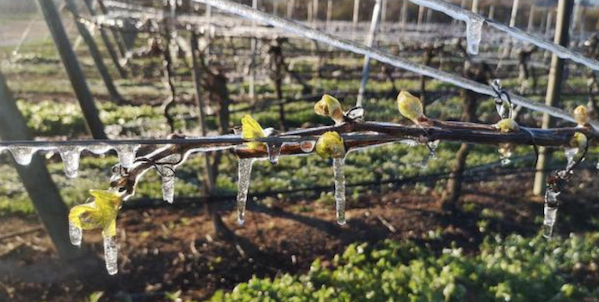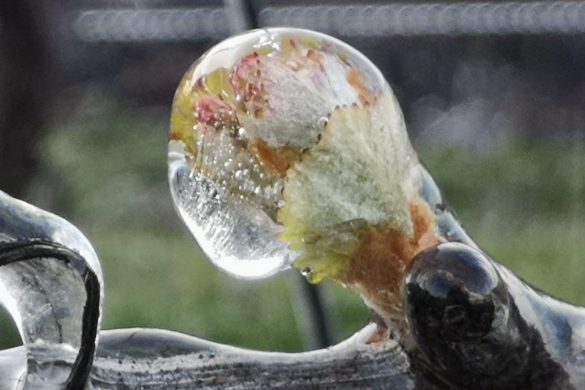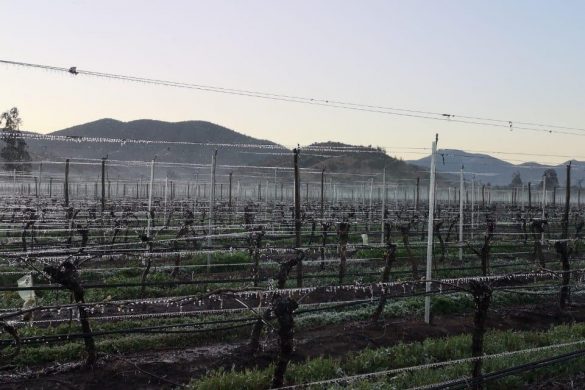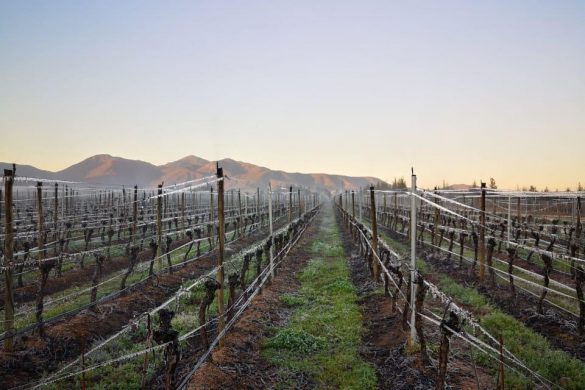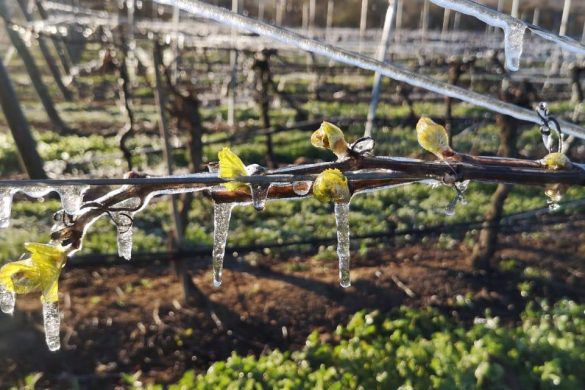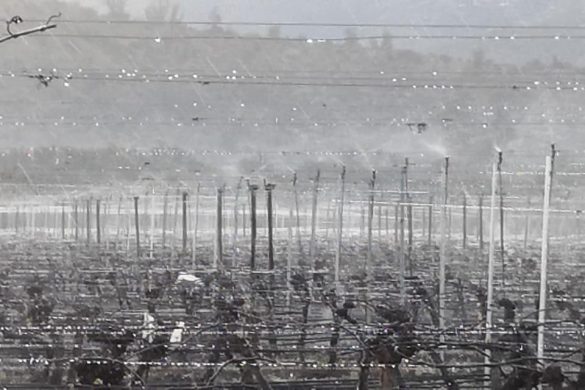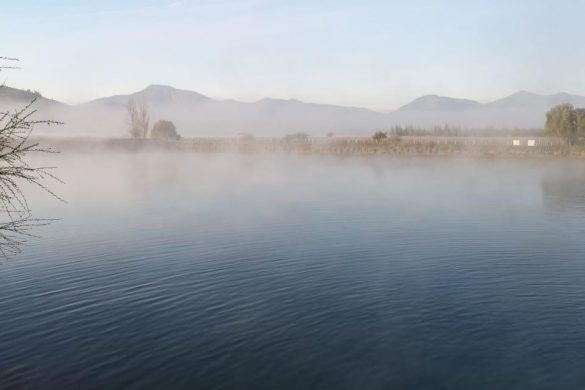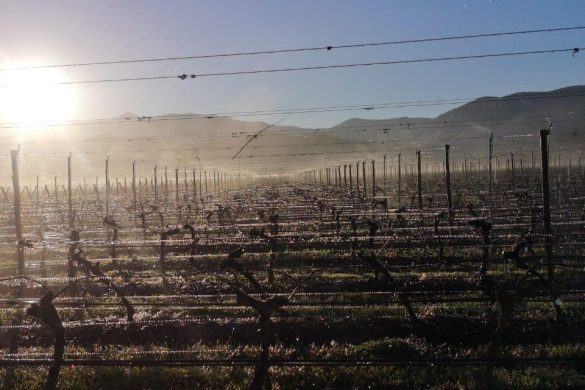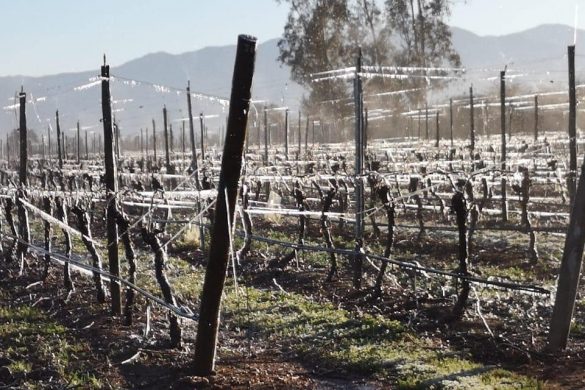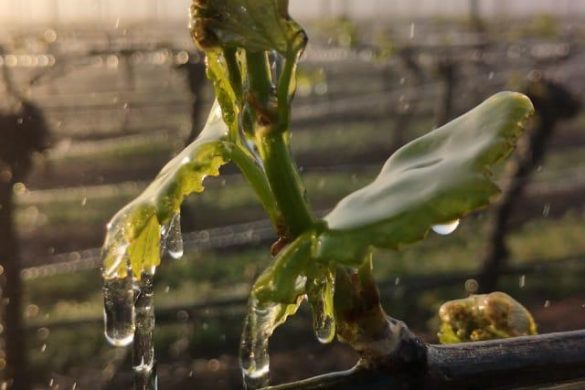Last week temperatures in Chile dropped to below zero degrees celsius for three days in a row, causing significant frost damage from some producers across the Central Valley, notably in Colchagua, as well as in the coastal regions of San Antonio and Casablanca.
Although it is too early to assess the full damage, some producers are reporting losses of up to 100% in their vineyards. While there is always hope for the second budbreak to renew a vineyard following frost, producers are concerned as the weather forecast for the coming weeks predicts further frost.
Frost in Colchagua
Although no official figures have been released, the most widespread damage is in the lower-lying wine regions of Colchagua and lower sectors of vineyards in Palmilla, Marchigue, Lolol, Apalta and Peralillo among others. Temperatures hit their lowest on Wednesday 2nd October, dropping to 2.5 degrees Celcius below zero.
“It was in the lower-level areas, where the frost basins formed, that the vineyards were worst affected,” Wildmakers winemaker José Miguel Soto, who also consults for growers around Colchagua, told South America Wine Guide. “Malbec, Syrah and Merlot were some of the varieties most affected in Colchagua, but it wasn’t only grapes – Colchagua is a big fruit-producing area and many fruit producers were affected.”
The dry and mild winter also meant that budbreak had already happened in most parts of Colchagua, making vineyards more susceptible to frost damage. “We had some degree of damage in 31 hectares of our vineyards from last week’s frost,” says Colchagua-based Casa Silva Head Viticulturist René Vásquez. “On our 25-hectare estate near Angostura, we were worst affected, because budbreak was over a week to 10 days before the frost and we lost 100% of our shoots there. It was a really severe frost.”
Frost in Casablanca & San Antonio
Frost damage is also being reported in the coastal regions of Casablanca and San Antonio, where the areas with the most marginal climate have been worst affected. “Every year we have frosts, to be honest, but we lost buds three weeks ago to a frost, and now we’ve just lost the second buds to this frost last week, which lasted three days,” said Felipe Marin of Casa Marin, whose family estate is located just 4 km from the sea in Lo Abarca.
“All of our vineyards that are at less than 100 metres above sea level were burnt by the frost; about 65% of our vineyards. Considering our yields are extremely low anyway, we only get 4,000 to 5,000 kg a hectare, you can imagine what impact this will have on our production! But it is still too early to come to conclusions because there are more frosts predicted until the beginning of November.”
Fighting frost without fire or water
One of the biggest challenges is that producers are left with few tools to combat frost, as both fire and water are increasingly prohibited in Chile. “We used to use estufas (small fuel-burners) for frost protection, but they are very contaminant to the environment and as we are a sustainable vineyard we have stopped this practice,” Felipe Marin told South America Wine Guide.
“We had also invested in a water system for frost control, but it uses a lot of water! And as we have had many days of frost, it also adds problems of over-irrigation and the water consumption is just too high – it’s a big waste of water. Chile is in its tenth year of drought, and we can’t waste water. It would be suicide to keep using the water systems because you are left without water to irrigate in the summer.”
Unfortunately, it seems like a case of damned if you do, and damned if you don’t for many producers at the moment.
“All we can do is wait,” René Vasquez says. “There’s a month left of frost risk, but also a month in which we will be hoping for our second buds. We just have to wait and see.”
Ultimately it is a game of patience and nerves of steel.
Photo album from Tapihue in Casablanca (with frost protection)
